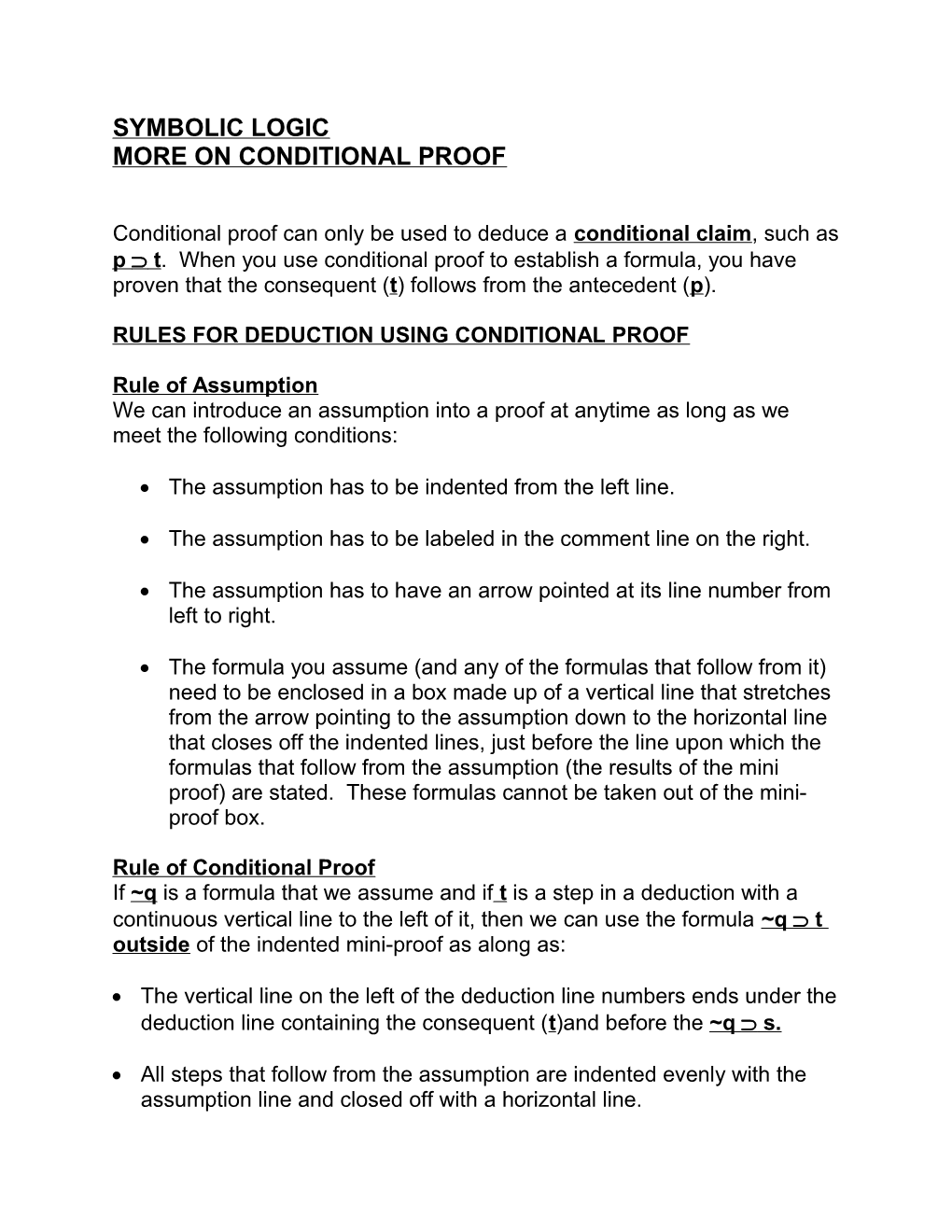SYMBOLIC LOGIC
MORE ON CONDITIONAL PROOF
Conditional proof can only be used to deduce a conditional claim, such as p t. When you use conditional proof to establish a formula, you have proven that the consequent (t) follows from the antecedent (p).
RULES FOR DEDUCTION USING CONDITIONAL PROOF
Rule of Assumption
We can introduce an assumption into a proof at anytime as long as we meet the following conditions:
- The assumption has to be indented from the left line.
- The assumption has to belabeled in the comment line on the right.
- The assumption has to have an arrow pointed at its line number from left to right.
- The formula you assume (and anyof the formulasthat follow fromit) need to be enclosed in a box made up of a vertical line that stretches from the arrow pointing to the assumption down to the horizontal line that closes off the indented lines, just before the line upon which the formulas that follow from the assumption (the results of the mini proof) are stated. These formulas cannot be taken out of the mini-proof box.
Rule of Conditional Proof
If ~q is a formula that we assume and ift is a step in a deduction with a continuous vertical line to the left of it, then we can use the formula ~q toutside of the indented mini-proof as along as:
- The vertical line on the left of the deduction line numbers ends under the deduction line containing the consequent (t)and before the ~qs.
- All steps that follow from the assumption are indented evenly with the assumption line and closed off with a horizontal line.
- When using conditional proof, any formula derived within the conditional proof lines, that is, between the assumption and the line that closes off the indented mini-proof, is dependent on the assumption made for that mini-proof. (This is why the lines based on the assumption are indented.) You cannot take a formula based on the indented assumption and use it on any line of the proof that is un-indented or outside the conditional proof lines. For example, if assuming ~q allows you to deduce s (as an intermediate step), then you cannot use the formula s outside of the mini-proof but can only use the formula ~q s.
- You can construct more than one conditional proof in a deduction, but, when you do so, they either need to be (1) nested or (2) separate entirely. We cannot have a case in which the conditional proof lines cross.
Nested Conditional Proof Example
1. p [q V (r & s)]PremiseTo show: p t
2. (~q s) tPremise
--3. pAssumption
|4. q V (r & s)1,3 Modus Ponens
|5. ~q (r & s)4 Implication
|6. ~qAssumption
||7. r & s5, 6 Modus Ponens
||8. s7 Simplification
|------
|9. ~q s6-8 Conditional Proof
|10. t2, 9 Modus Ponens
11.p t3-10 Conditional Proof
TIP: When using CP to prove a conditional proof, assume as much as possible. For example, if you are trying to deduce[(A A) B] B, assume (A A) B as the antecedent.
